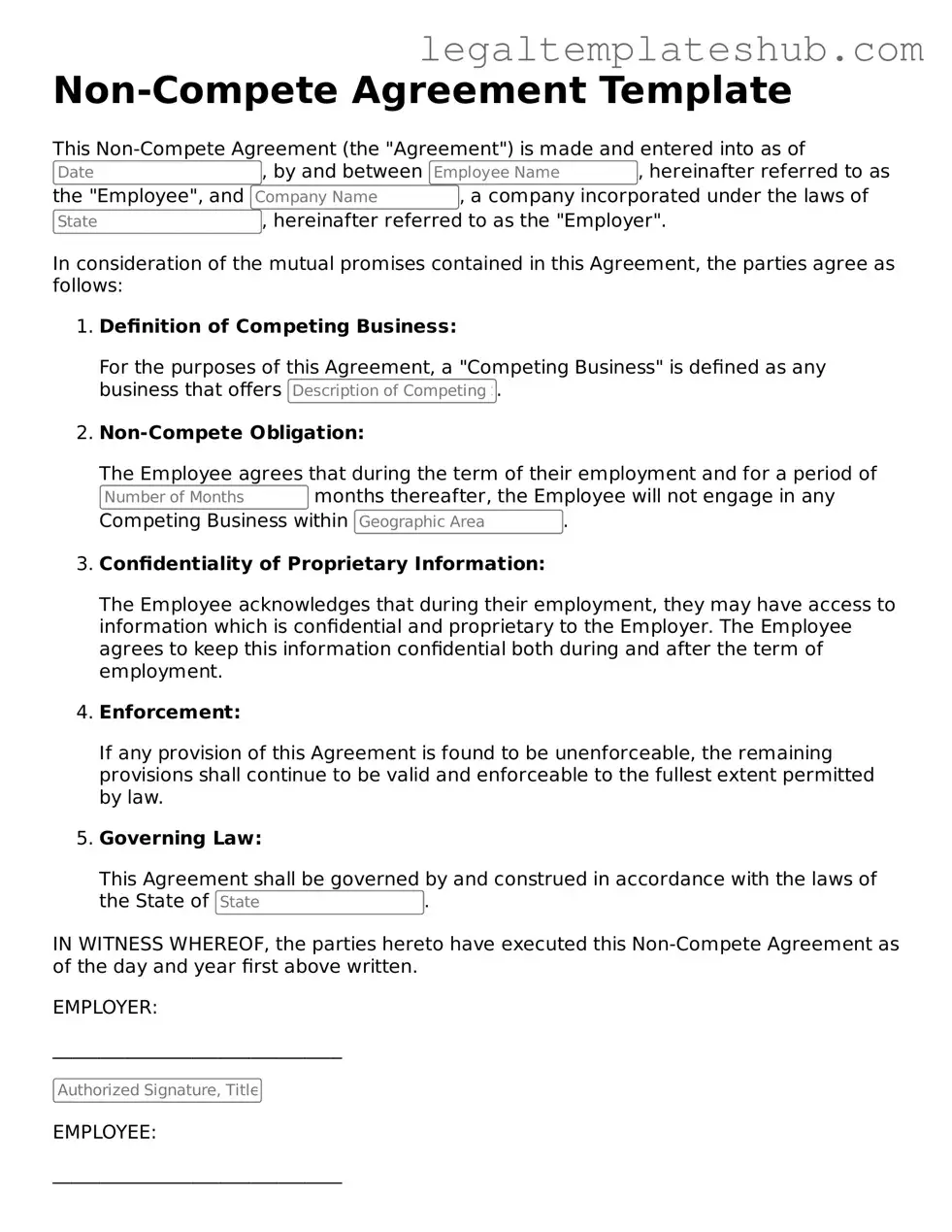Printable Non-compete Agreement Template
A Non-compete Agreement is a legal document that restricts an individual's ability to engage in competitive activities after leaving a job. This form is commonly used by employers to protect their business interests and confidential information. Understanding its terms and implications is essential for both employees and employers alike.
To learn more and fill out the Non-compete Agreement form, click the button below.
Access Editor
